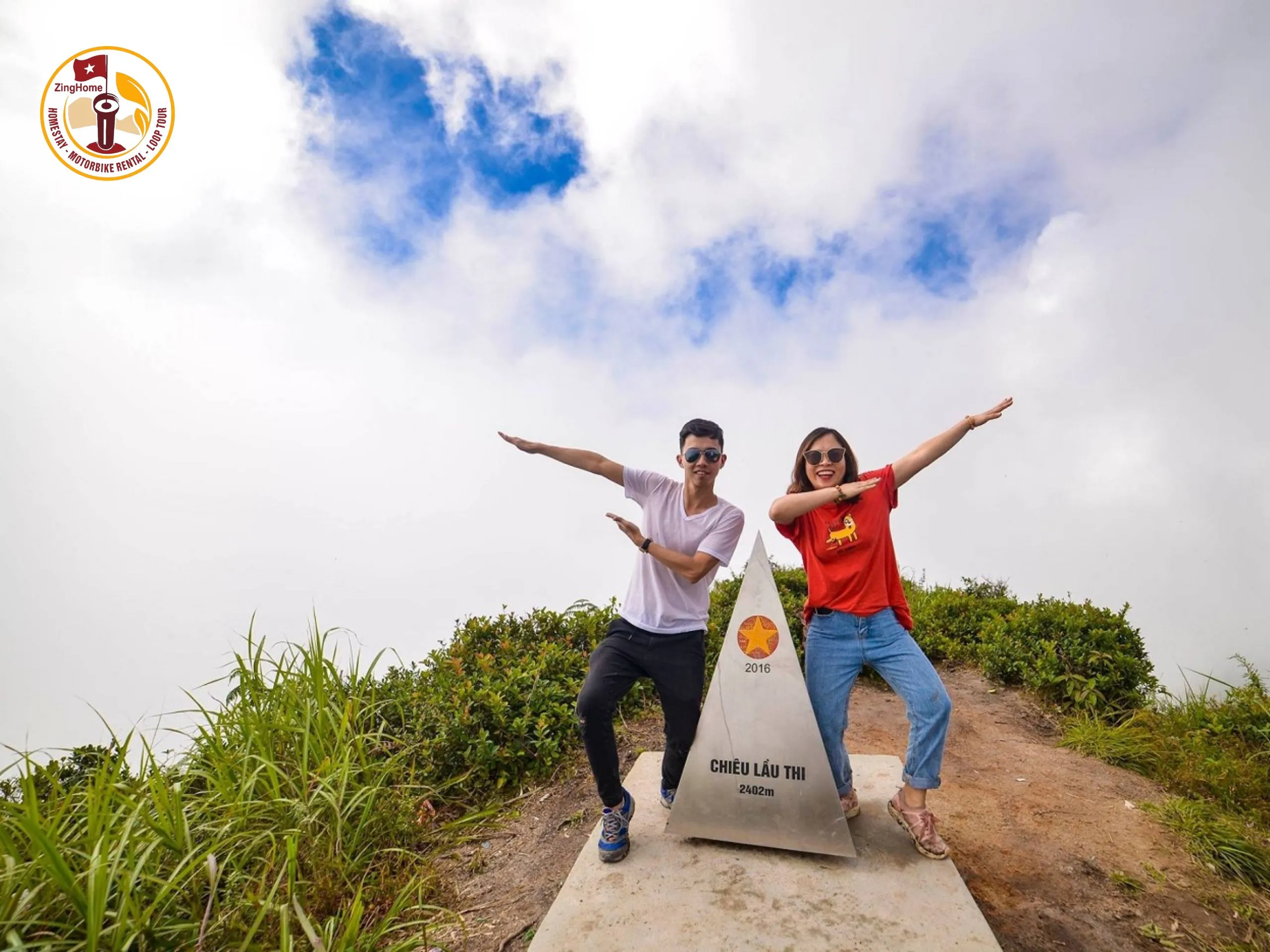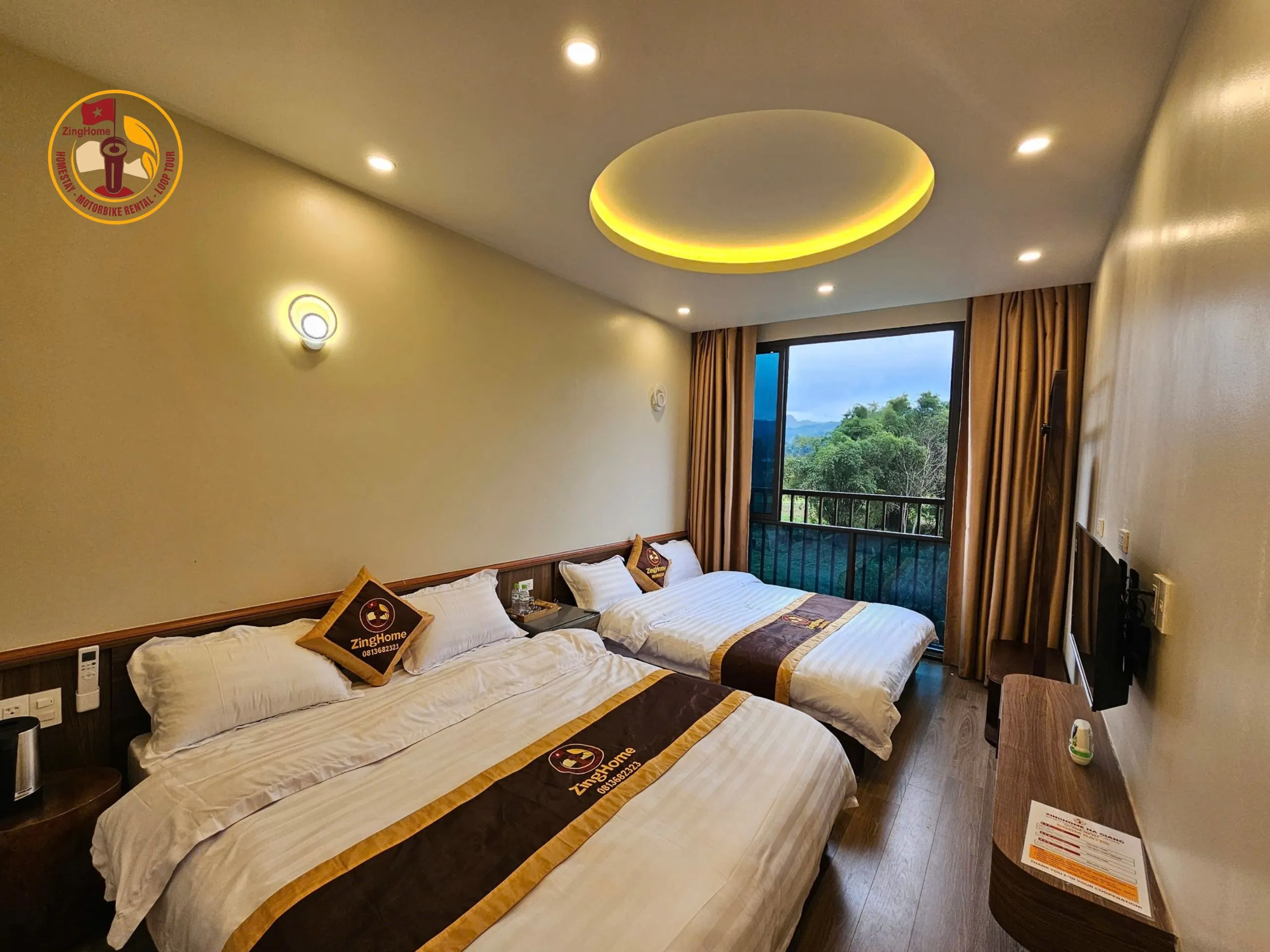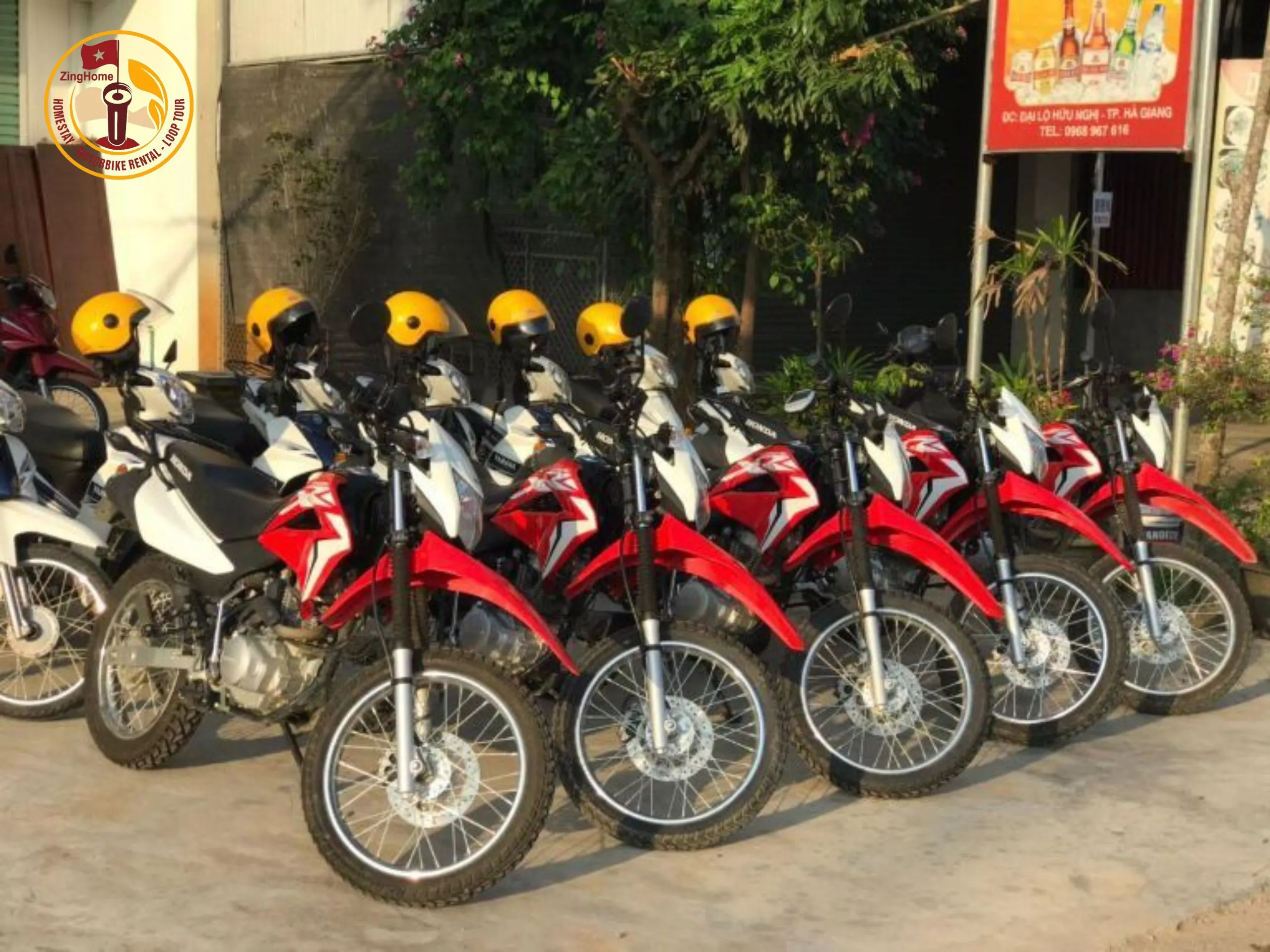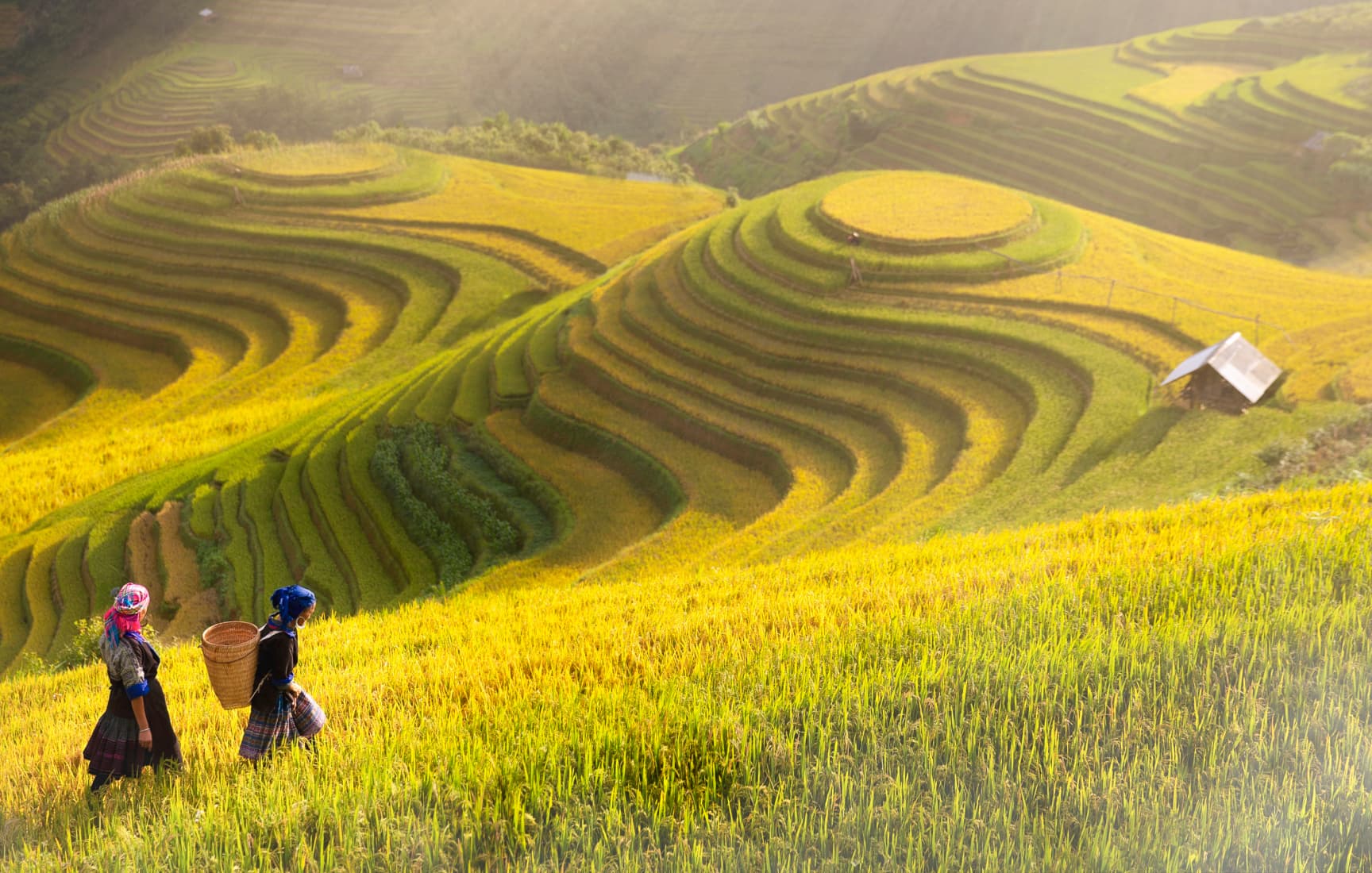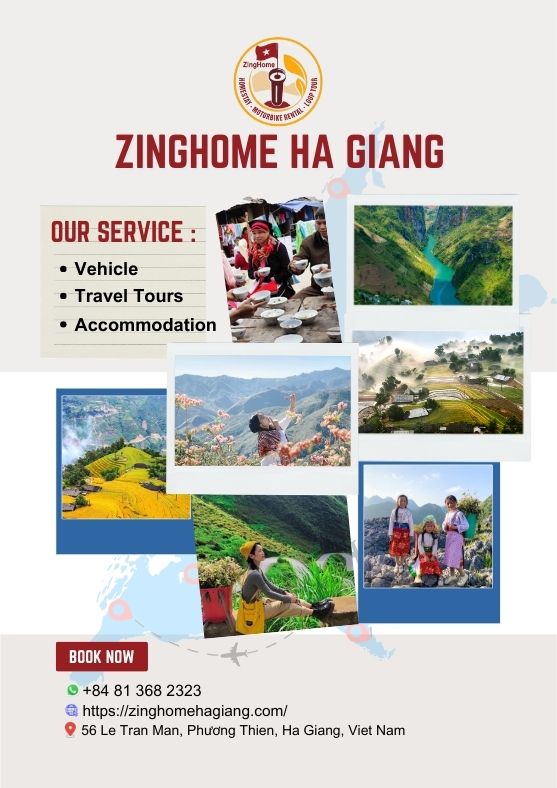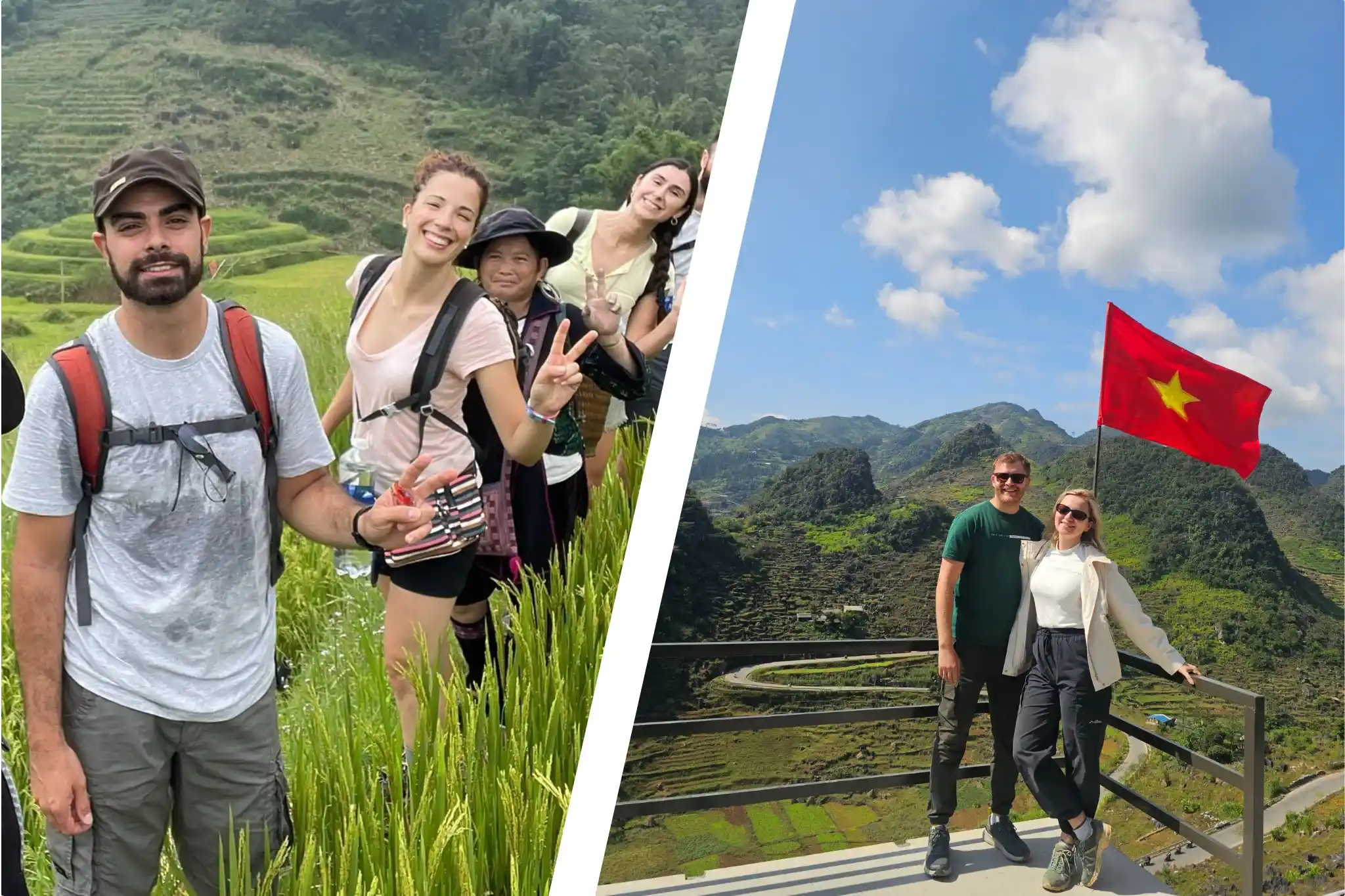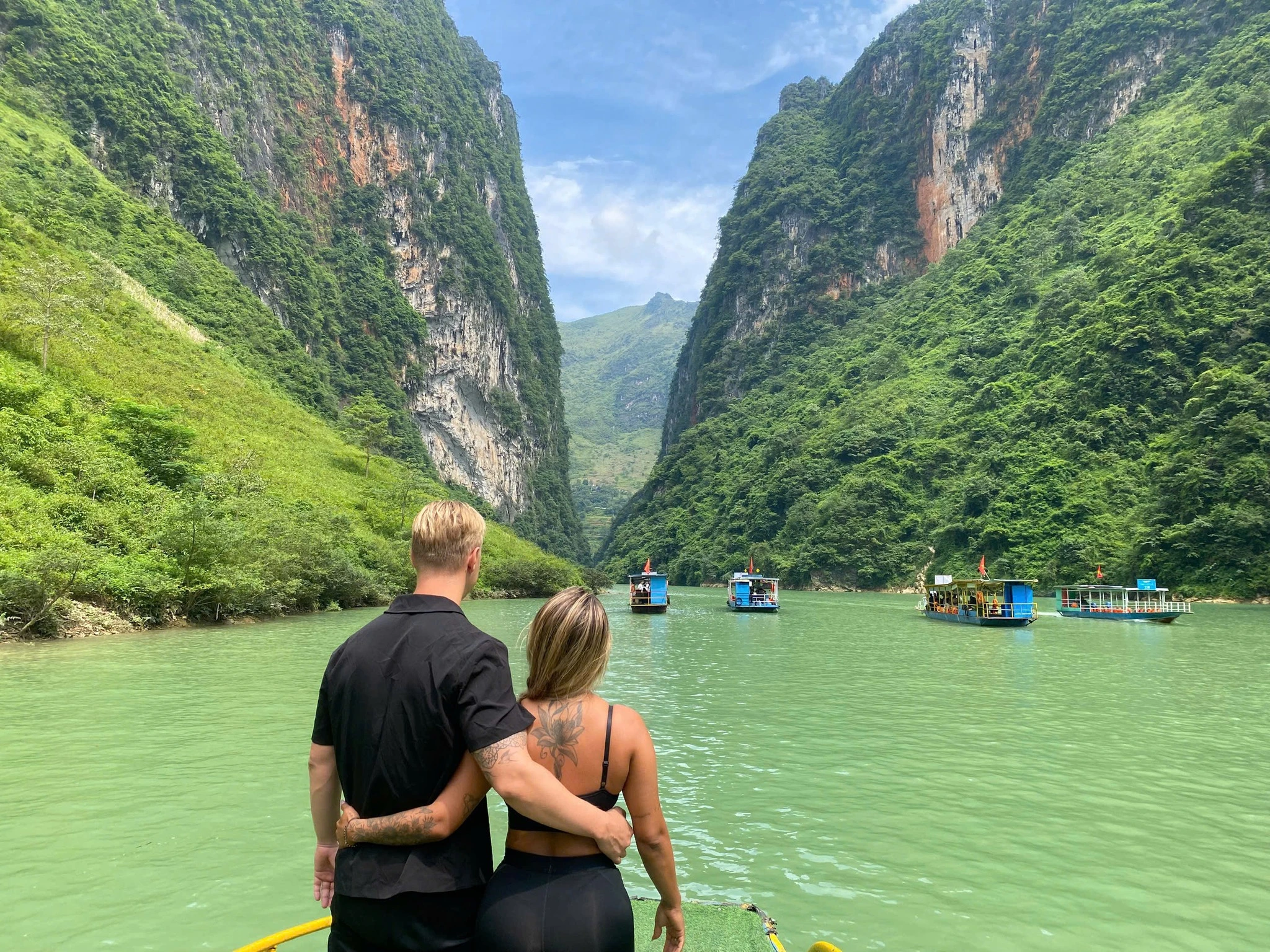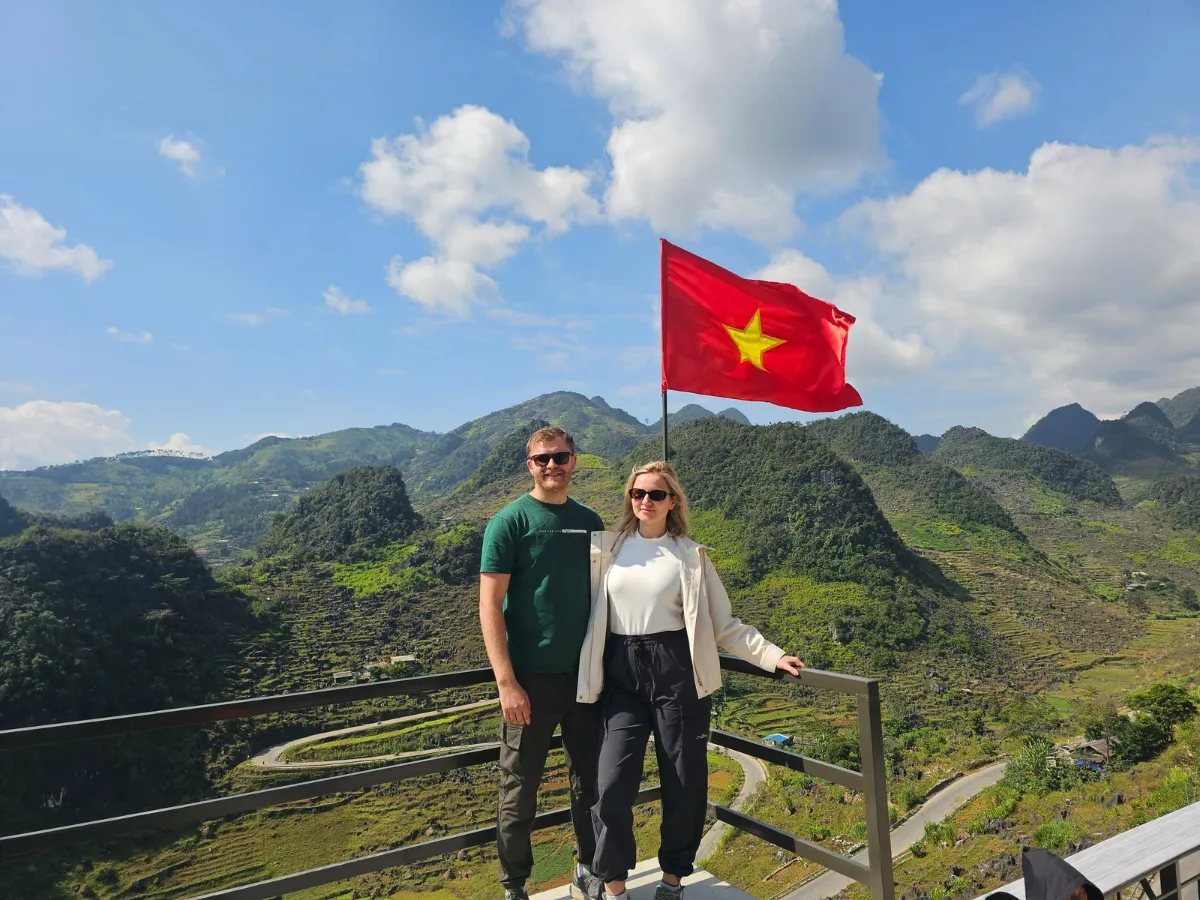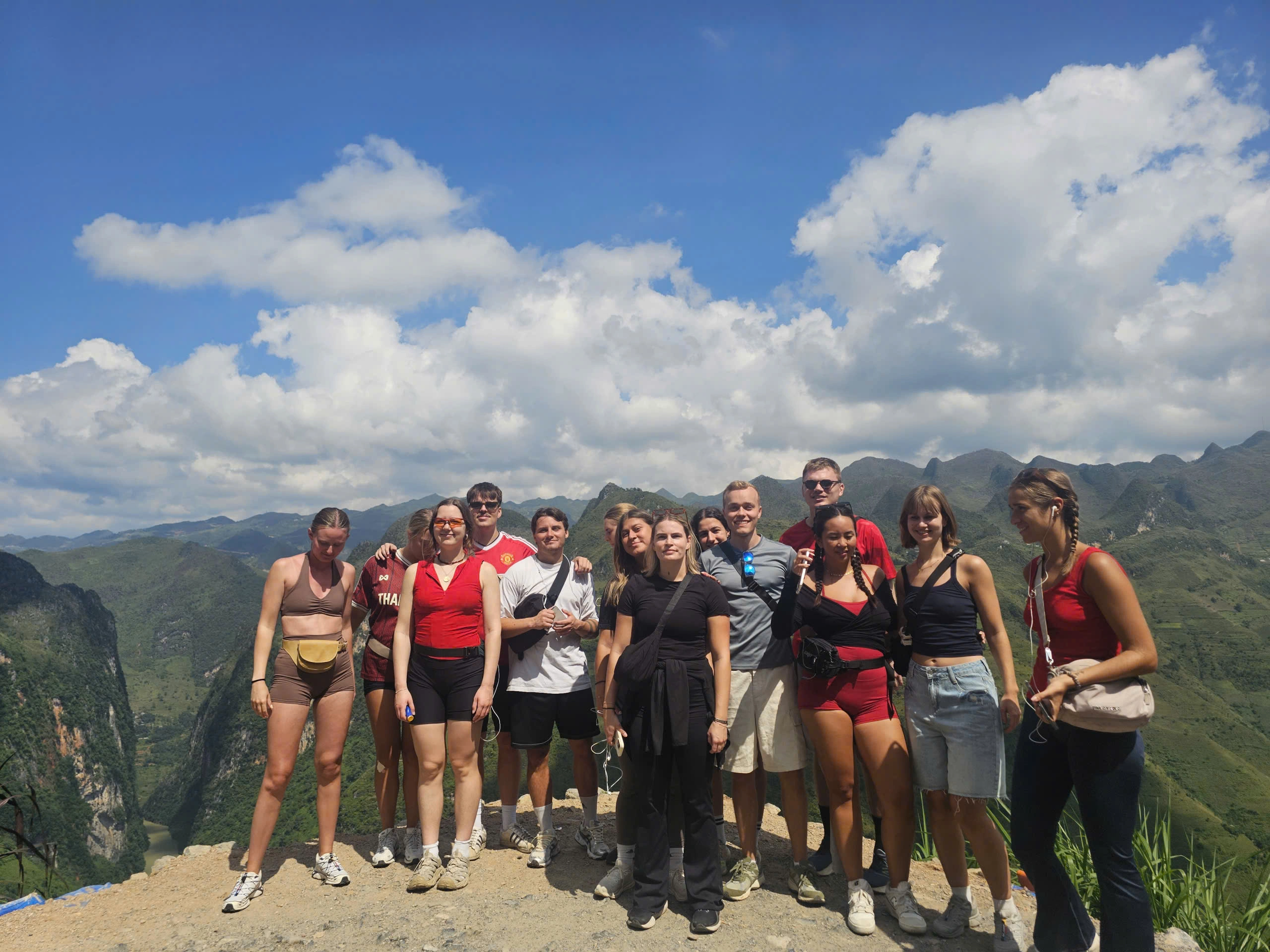Best Time of Year to Do Ha Giang Loop – Embarking on the Ha Giang Loop is like entering a living masterpiece, where every twist and turn unveils another stunning corner of Vietnam’s northern highlands. This remote and rugged region is celebrated not only for its dramatic mountain landscapes but also for its rich cultural tapestry woven by ethnic minority communities.
Yet, your journey through these scenic mountain roads and hidden valleys can vary greatly depending on the season. From the soft pastel hues of blooming spring flowers to the golden glow of terraced rice fields in autumn, each time of year offers its own magic. Knowing what to expect in each season is essential to choosing the ideal moment for your Ha Giang adventure. In this article, we explore how seasonal changes shape the experience, helping you plan the perfect time to take on the legendary Ha Giang Loop.
Understanding the Seasons in Ha Giang
The Ha Giang region is a destination that transforms beautifully with the seasons, offering travelers a rich variety of sights and experiences throughout the year. Understanding the Best Time of Year to Do Ha Giang Loop is essential for making the most of your journey, as the interplay between weather, landscapes, and local culture changes dramatically from one season to the next.
Spring (January – March) brings a fresh breath of life to the region, with moderate temperatures ranging from 17°C to 24°C. This is when peach and plum blossoms begin to bloom, covering the hillsides in soft shades of pink and white. The cool climate makes it ideal for trekking and motorbiking, offering stunning views and crisp, invigorating air. It’s also a great time for photographers and cultural enthusiasts, as traditional festivals like the Khau Vai Love Market take place during this season.
Summer (June – August) is considered a more challenging time due to high temperatures (averaging around 30°C) and frequent rain showers. The roads can become slippery, and landslides are a potential risk. However, adventurous travelers are rewarded with vibrant green rice terraces and quieter tourist sites. Despite the weather, summer unveils a lush, verdant beauty that’s truly unforgettable.
Autumn (September – November) is often regarded as the best time of year to do Ha Giang Loop, thanks to its mild climate, clear skies, and the breathtaking transformation of rice fields into golden terraces. With temperatures ranging from 15°C to 28°C and little rainfall, autumn is perfect for exploration. Photographers flock to the region to capture not only the harvest season but also the blooming of buckwheat flowers in November, adding a poetic charm to the mountain landscapes.
Winter (December – February) brings colder temperatures, occasionally dipping to 5°C at night, especially in the highlands. Fog and even snowfall are possible in some areas, creating a serene and mysterious atmosphere. While outdoor activities may be limited by the cold, this season offers peaceful, crowd-free experiences ideal for those seeking solitude and a quiet connection with nature.
In short, knowing the Best Time of Year to Do Ha Giang Loop will significantly enhance your travel experience. Whether you’re drawn to spring’s blossoms, summer’s lush greenery, autumn’s golden harvest, or winter’s tranquil beauty, each season reveals a different facet of Ha Giang’s remarkable charm.

A small village nestled between the mountains, featuring traditional earthen houses with yin-yang tiled roofs. The H’Mong people live here, preserving a rich and distinctive highland culture
Weather Conditions During Each Season
The weather in Ha Giang plays a significant role in influencing the overall travel experience along the loop. Each season brings its own beauty and challenges, so understanding what to expect throughout the year is essential for planning a smooth and fulfilling adventure. In fact, choosing the best time of year to do Ha Giang Loop largely depends on your weather preferences and travel goals.
In spring (January to March), Ha Giang is bathed in clear skies and mild temperatures ranging from 17°C to 24°C (63–75°F). Rainfall is minimal, making the roads more accessible and perfect for motorbiking or trekking. This is also when flowers bloom across the hillsides, offering vibrant scenery ideal for photography and cultural discovery.
Summer (June to August) brings intense heat and frequent downpours. Temperatures can exceed 30°C (86°F), and heavy rain often leads to slippery roads and the occasional landslide in mountainous areas. While it’s not typically considered the best time of year to do Ha Giang Loop, summer still attracts adventurous travelers drawn to the lush, green rice terraces and fewer crowds.
Autumn (September to November) is widely regarded as the best time of year to do Ha Giang Loop by many seasoned visitors. With cooler temperatures (15°C to 28°C / 59–82°F) and significantly reduced rainfall, it’s the perfect season for outdoor exploration. The golden rice terraces in harvest season and the blooming of buckwheat flowers add to the region’s breathtaking charm.
In winter (December to February), the region quiets down under colder weather, with temperatures dipping to around 5°C (41°F) in higher altitudes. Though rainfall is minimal, fog and occasional snow create a peaceful, dreamlike atmosphere. While festivals and activities may be fewer, this time is ideal for those seeking solitude and scenic serenity.
Ultimately, understanding seasonal weather will help you decide on the best time of year to do Ha Giang Loop, allowing you to plan a journey that aligns with both your interests and your level of comfort. Whether you crave vibrant landscapes, peaceful moments, or cultural immersion, Ha Giang offers something special in every season.
Peak Tourist Season and Its Impact
Choosing the best time of year to do Ha Giang Loop not only depends on weather conditions but also on tourist flow, which fluctuates noticeably throughout the year. Recognizing when the peak travel months occur can help you better plan your journey, maximizing your experience while staying ahead of potential challenges.
Typically, the loop sees the highest number of visitors from September to November and March to May. These periods are widely considered the best – and for good reason. In autumn, Ha Giang glows with golden rice terraces under cool, dry skies, while spring brings blooming peach and plum blossoms that transform the landscape into a vibrant canvas. These months also host many cultural festivals, making them ideal for immersive local experiences and incredible photography opportunities.
However, peak season also comes with certain drawbacks. Accommodations and tours tend to book out quickly, and prices often rise due to increased demand. For those who prefer a quieter journey, considering alternative periods may be worthwhile. Late spring and early summer (around April and May) still offer beautiful natural scenes without the intensity of the autumn crowds. Meanwhile, winter months (December to February) provide a more tranquil experience, though the colder weather and occasional fog may limit some outdoor activities.
Ultimately, understanding both the seasonal highlights and the ebb and flow of tourism helps you determine the best time of year to do Ha Giang Loop balancing scenic beauty, cultural events, and the type of travel atmosphere you desire.
Best Months for Scenic Views and Photography
When it comes to capturing the breathtaking beauty of the Ha Giang Loop, certain months are particularly photogenic and often coincide with the best time of year to do Ha Giang Loop. These periods showcase dramatic transformations in the landscape, creating unforgettable scenes for both amateur and professional photographers alike.
From September to November, Ha Giang enters its most visually captivating season. The rice terraces turn golden as harvest time arrives, creating rich contrasts against the deep green of the surrounding mountains. This autumnal glory, paired with crisp air and minimal rainfall, provides excellent visibility and lighting for photography. With temperatures hovering around 24–28°C (75 – 82°F), it’s also a comfortable time to explore. Adding to the appeal, cultural festivals like the Pa Then Fire Jumping Festival offer unique chances to capture ethnic traditions in motion vibrant costumes, ritual dances, and intimate community moments.
Another excellent photography window occurs between March and May, when spring breathes new life into the highlands. The hills and valleys burst into color as peach and plum blossoms bloom, blanketing the region in soft hues of pink and white. This season not only delivers stunning natural scenery but also aligns with numerous local festivals, giving photographers a chance to document authentic cultural expressions. With pleasant temperatures ranging from 18–25°C (64–77°F) and ideal trekking conditions, spring is perfect for reaching remote, hidden corners of the loop that reveal untouched beauty.
Whether you’re chasing golden fields or flowering hillsides, knowing the best time of year to do Ha Giang Loop helps ensure your camera captures the region at its most stunning—blending natural grandeur with deep cultural richness.
Avoiding Rainy Season: Is It Worth It?
For anyone considering a journey through the Ha Giang Loop, understanding the impact of Vietnam’s rainy season is crucial. This knowledge not only helps ensure a safer experience but also guides you toward choosing the best time of year to do Ha Giang Loop for maximum enjoyment.
Traveling between June and early September, the peak of the rainy season, presents several challenges. Heavy downpours frequently cause mudslides, turning certain roads into dangerous, slippery stretches. For those unfamiliar with mountainous terrain or less confident in handling motorbikes, the risk of accidents increases substantially. Moreover, persistent rain can disrupt travel plans, limiting your ability to fully explore the loop and enjoy its iconic sights.
By contrast, opting to travel during the drier months from October to April significantly improves your overall experience. Roads are more stable and easier to navigate, especially by motorbike, which is the preferred way to see the region. The scenery also becomes more vivid during the dry season, crisp blue skies enhance the rich greens of the mountains and the vibrant colors of local life, making it an excellent time for photography and cultural immersion.
So, is it worth avoiding the rain? For most travelers, especially first-timers, the answer is yes. While the rainy season holds a certain misty charm, the best time of year to do Ha Giang Loop is typically in the dry months, when nature is in full display and weather conditions allow for safer, smoother exploration. Choosing the right season ensures you not only stay safe but also enjoy the spectacular beauty and unique culture that make Ha Giang an unforgettable destination.
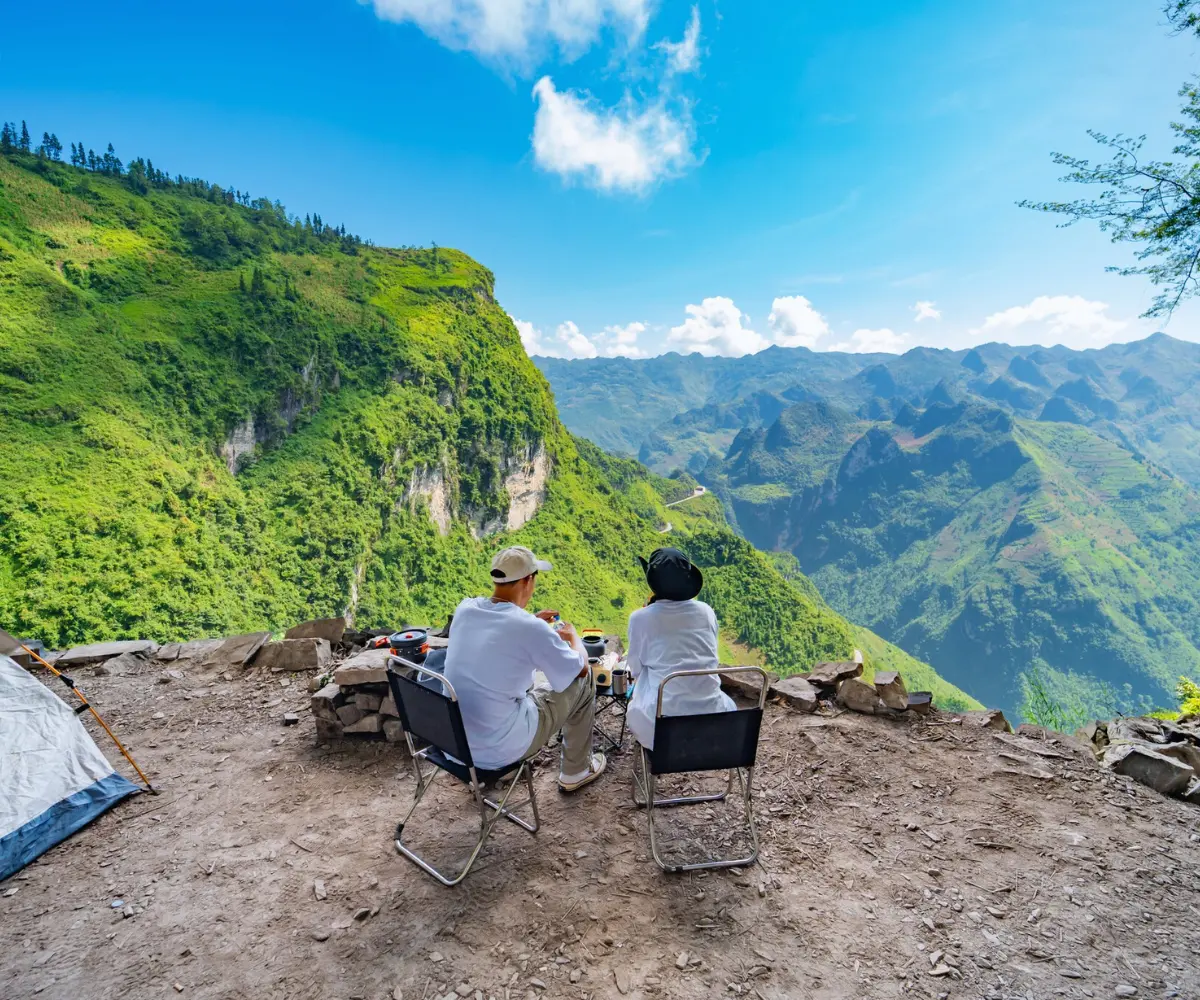
The towering rocky mountains create a majestic natural landscape, rich in the essence of the highlands.
Festivals and Cultural Events: Timing Your Visit
The Ha Giang region is not only known for its majestic landscapes but also stands out as a vibrant cultural hub, rich with festivals and age-old traditions. For many travelers, the best time of year to do Ha Giang Loop isn’t just about perfect weather, it’s also about aligning the journey with the region’s unique cultural calendar.
In September, the Pa Then Festival comes alive with spirited performances, traditional games, and communal gatherings. Visitors are not only welcome to observe but also invited to participate, creating unforgettable moments of connection. The festival is also a photographer’s dream, with vivid costumes and dynamic rituals lighting up the scene.
Planning your visit around these events adds a powerful cultural layer to the trip. Immersing yourself in local festivities allows for genuine interactions with the community and a deeper appreciation of the region’s diversity. It’s these cultural highlights that often define a truly memorable journey.
In the end, for those seeking more than just beautiful scenery, the best time of year to do Ha Giang Loop may very well be when these cultural celebrations take place. They offer a rare chance to witness and take part in the living traditions that make Ha Giang not only a destination of natural beauty but also one of rich human heritage.
Comparing Different Seasons for Biking Conditions
Biking through the Ha Giang Loop offers an exhilarating and immersive way to take in the region’s breathtaking landscapes. However, biking conditions can vary significantly with the seasons, making it essential to understand what to expect when deciding on the best time of year to do Ha Giang Loop.
From March to May, spring delivers some of the most favorable biking conditions. With temperatures ranging from 18° to 25°C (64°–77°F), riders can enjoy firm, dry roads framed by hillsides blooming with peach and plum blossoms. It’s an ideal time for those seeking both comfort and vibrant scenery.
By contrast, the summer months from June to August can be quite challenging. Temperatures often hover around 30°C (86°F), but it’s the heavy rains and high humidity that pose a real concern. Slippery roads, poor visibility, and the increased risk of mudslides make this season better suited to experienced riders with a high tolerance for unpredictable weather.
Autumn, stretching from September to November, is widely regarded as the best time of year to do Ha Giang Loop by bike. The weather is comfortably cool, typically between 24° and 28°C (75°– 82°F), and the landscape transforms with golden rice terraces and clear blue skies. Dry roads and spectacular views combine to create near-perfect biking conditions.
In winter (December to February), the Ha Giang Loop becomes a different kind of adventure. With temperatures dropping to around 5°C (41°F) in some areas and the occasional appearance of icy patches, riders need to be well-prepared for the cold., bikers need to be well-prepared for the cold. While the roads are generally dry and the region less crowded, the chilly air and fog can make riding more demanding.
Ultimately, choosing the best time of year to do Ha Giang Loop by bike depends on your comfort with varying road conditions, your riding skill level, and the type of atmosphere you’re seeking whether it’s vibrant springtime blooms, golden autumn landscapes, or the tranquil solitude of winter.
Recommendations for Off-Peak Travel
Traveling to Ha Giang during the off-peak seasons unveils a quieter, more intimate side of the region one that many travelers miss when visiting during peak times. For those seeking a less crowded, more immersive adventure, the off-peak months might just be the best time of year to do Ha Giang Loop, depending on your travel goals.
Late autumn, particularly October, is a hidden sweet spot. While this period borders the end of the peak season, most tourists depart after the rice harvest, leaving behind golden terraces still glowing in the sun but now with a peaceful stillness. Similarly, winter months (December to February), though colder and occasionally foggy, offer a tranquil experience free from the hustle and bustle. The landscapes are serene, and you’ll find yourself often alone with nature an ideal setting for reflective travelers and photographers seeking calm, misty backdrops.
There are clear advantages to choosing the off-peak route. Lower prices for accommodation and tours allow for a more flexible travel budget. At the same time, the absence of crowds makes room for genuine conversations and meaningful interactions with locals providing insights into everyday life that are often lost in busier seasons.
Beyond lower costs and solitude, off-peak travel offers authentic experiences. You’ll have the chance to observe unfiltered cultural practices, taste home-cooked meals in local villages, and explore winding trails without distraction. This solitude can make your journey not only more personal but also deeply memorable.
In conclusion, while the warmer, vibrant months are often considered the best time of year to do Ha Giang Loop, traveling during the off-peak seasons can be just as rewarding especially for those who value connection, stillness, and authenticity over postcard-perfect weather.
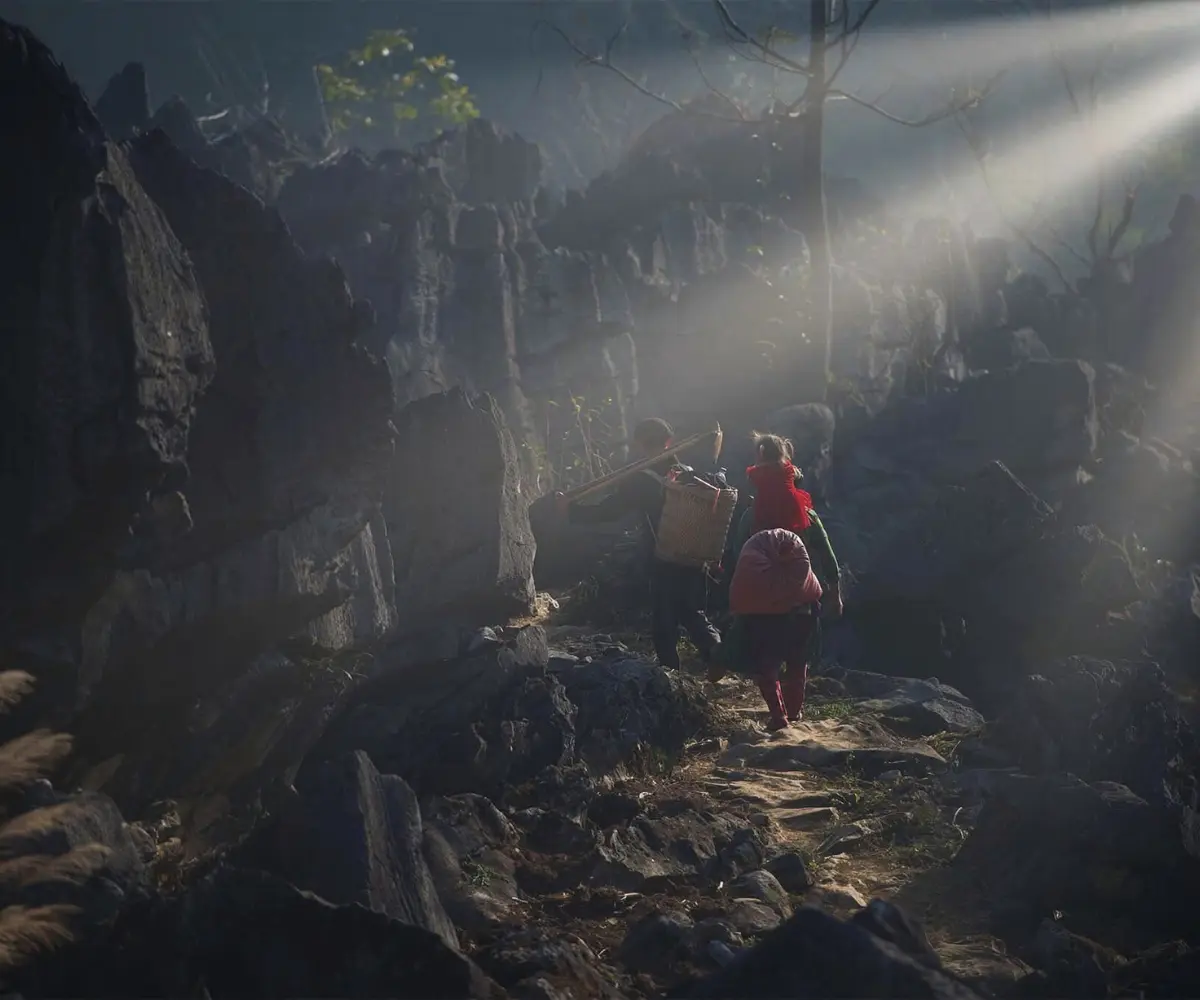
The daily life of the people in Ha Giang still preserves its rustic and simple charm amidst the majestic mountains and forests.
Seasonal Challenges for Travelers on the Ha Giang Loop
Every season along the Ha Giang Loop brings its own unique beauty but also specific challenges that travelers should be aware of before hitting the road. Recognizing these seasonal nuances will not only help with preparation but also influence your decision on the best time of year to do Ha Giang Loop.
During the rainy season (June to August), the most pressing concern is road safety. Torrential rains can cause landslides, slippery surfaces, and sudden flooding, making some stretches of the loop treacherous, especially for those traveling by motorbike. These conditions can also lead to unexpected travel delays, disrupting itineraries and even leading to cancellations of tours or homestays.
Winter (December to February) poses a different set of obstacles. Temperatures can drop significantly, making outdoor exploration less comfortable, particularly for travelers unaccustomed to cold climates. Dense fog is also common in the early mornings and late afternoons. It not only affects visibility for riders but also impacts photography, limiting the vibrant visuals Ha Giang is known for.
Even during the more favorable spring (March to May) and autumn (September to November) months often considered the best time of year to do Ha Giang Loop travelers should remain mindful. Sudden weather changes such as can occur without warning, and the popularity of these seasons can mean increased foot traffic at key attractions.
In short, while Ha Giang can be explored year-round, understanding the seasonal challenges equips you to plan better. Whether you’re packing rain gear, layering up for the cold, or booking accommodations early to beat the crowds, being prepared ensures a smoother and more enjoyable journey through this remarkable region.
Conclusion: Choosing the Right Time for Your Ha Giang Adventure
The experience of traveling along the Ha Giang Loop is a journey unlike any other one that is deeply influenced by the time of year you choose to go. Each season along the Ha Giang Loop brings its own magic from soft spring blossoms and lush summer greenery, to golden autumn rice fields and the misty calm of winter all accompanied by unique considerations. Deciding on the best time of year to do Ha Giang Loop depends on what you hope to gain from your adventure.
Reflecting on seasonal preferences is key. Are you a photography enthusiast seeking clear skies and striking contrasts? A cultural traveler hoping to witness vibrant festivals and traditions? Or someone who craves solitude and peaceful roads only found in the quiet of winter? Maybe you crave solitude and calm roads best found during the quieter winter months. Understanding your personal priorities whether it’s ideal weather, vibrant landscapes, or deeper cultural immersion will help determine your ideal timeframe.
Balancing peak vs. off-peak seasons is also crucial. While peak months promise festivals, social energy, and stunning views, they also bring higher costs and bigger crowds. Off-peak times, in contrast, offer serenity, lower prices, and more authentic encounters with local life, even if you may have to trade off perfect weather conditions.
Ultimately, aligning your travel with seasonal rhythms and cultural events will elevate your journey. With thoughtful planning, you’ll discover that the best time of year to do Ha Giang Loop is not just about weather it’s about when the landscape, the culture, and your own travel desires come together in perfect harmony, creating an unforgettable experience.
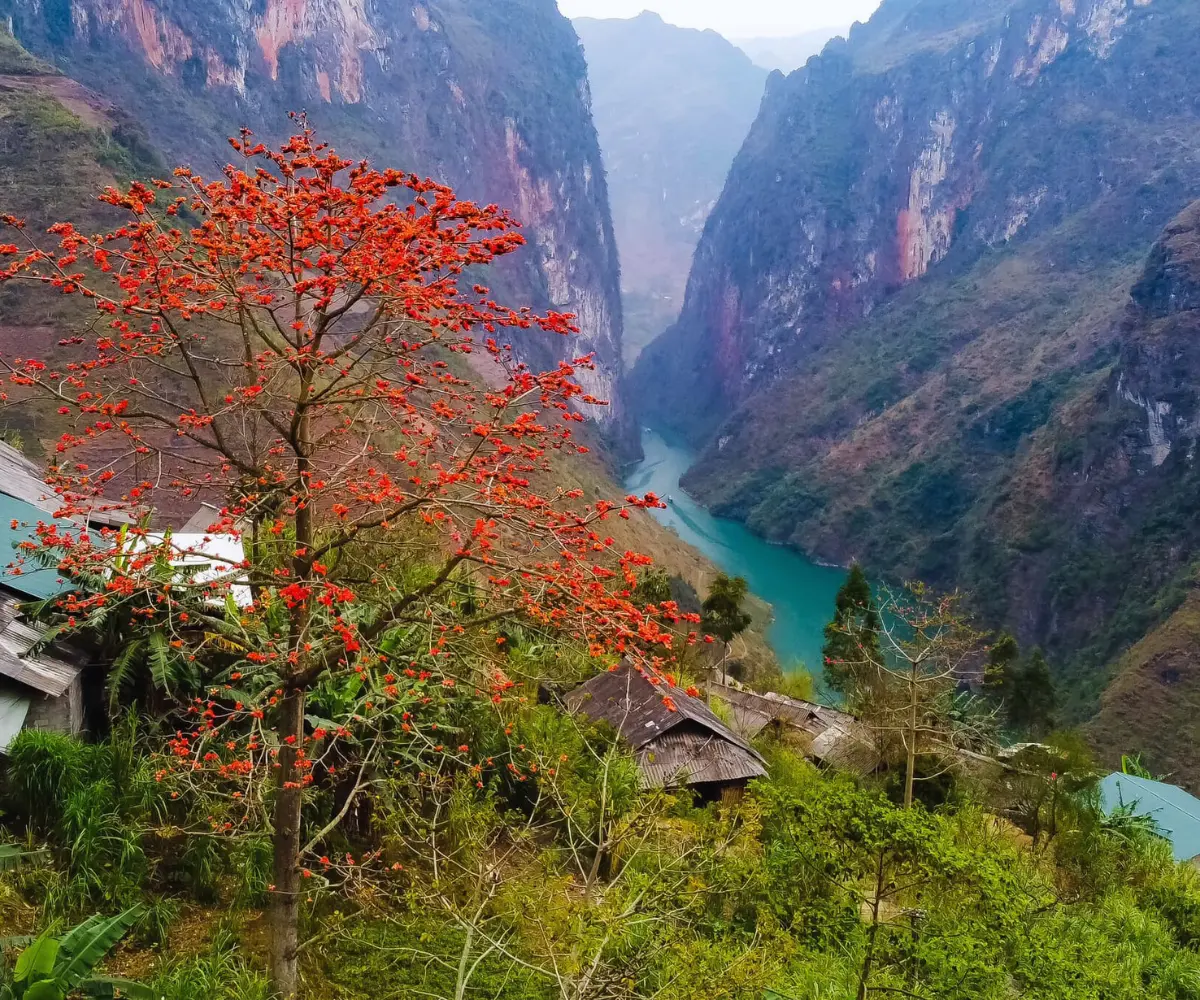
The emerald-green Nho Quế River flows through the deep Tu Sản Gorge, flanked by towering, majestic cliffs on both sides.
Ha Giang Loop with ZingHome
When planning your journey along the Ha Giang Loop, best Time of Year to Do Ha Giang Loop leveraging reliable local resources like ZingHome Ha Giang can make a remarkable difference in the quality of your experience. ZingHome is more than just a booking platform it’s your trusted travel companion, guiding you through the heart of Ha Giang with local insight and heartfelt hospitality. Whether you’re trying to determine the Best Time of Year to Do Ha Giang Loop or seeking tailored recommendations, ZingHome offers essential travel information and connects you with knowledgeable local experts who truly understand the rhythm and soul of this breathtaking region.
From handpicked accommodations suited to every budget and style, to expert guides who reveal hidden trails, lesser-known cultural sites, and authentic local experiences, ZingHome crafts every detail to fit your unique travel vision and expectations.
By choosing ZingHome as part of your planning process, you’re not just booking a trip you’re enriching your journey with cultural depth, environmental awareness, and the kind of personal insight that turns a good trip into a truly unforgettable one.
Best Time of Year to Do Ha Giang Loop, embarking on your journey with ZingHome means stepping into your Ha Giang adventure fully prepared both in terms of safety and experience. With access to trusted local insights, curated accommodations, and personalized support, ZingHome empowers you to explore the Ha Giang Loop with confidence and curiosity.
Through thoughtful planning and the right guidance, your trip won’t just be another destination it will become one of the most unforgettable highlights of your time in Vietnam, filled with breathtaking landscapes and meaningful cultural encounters.






